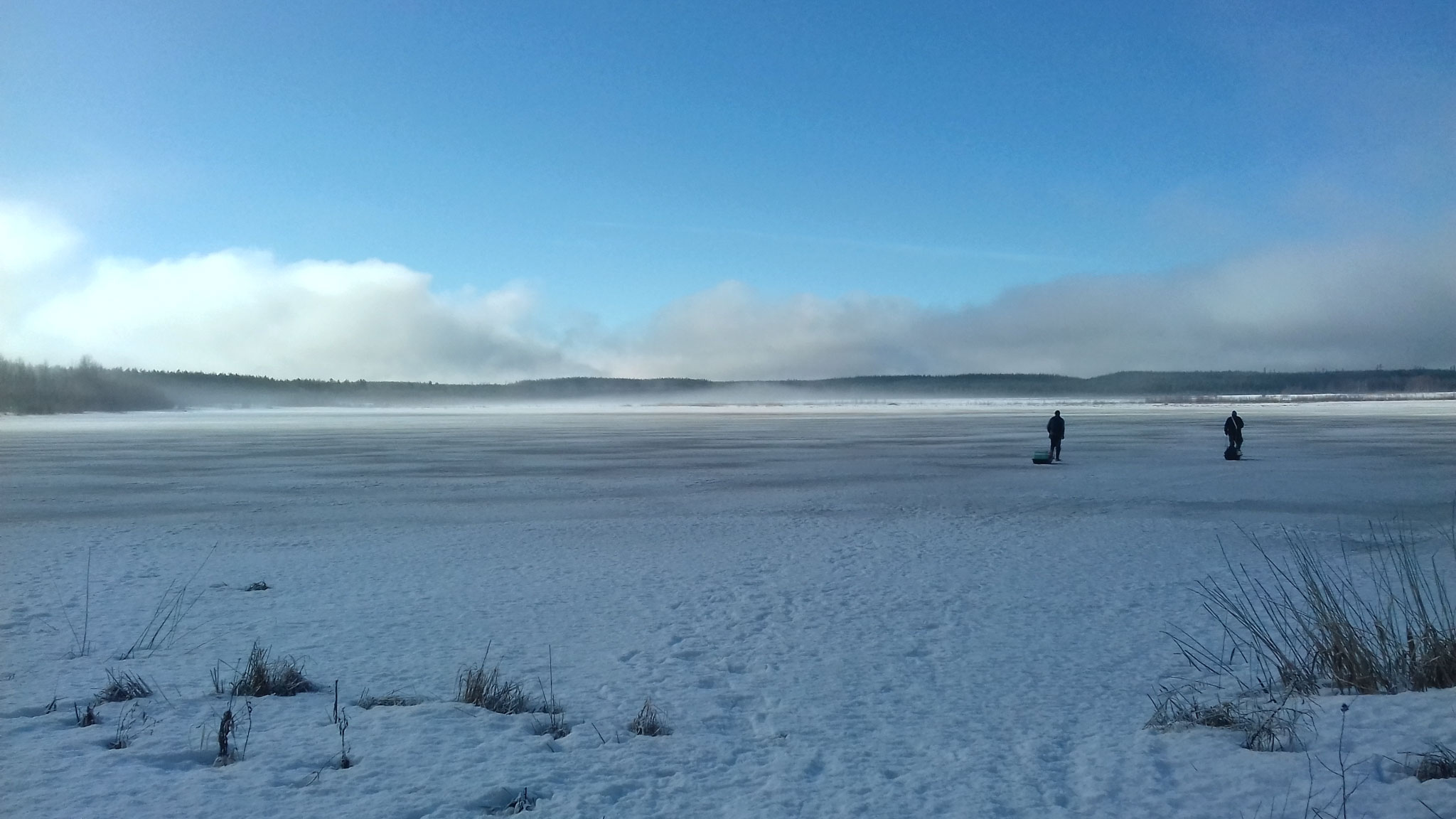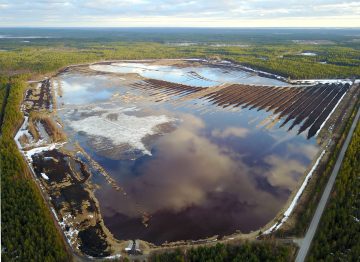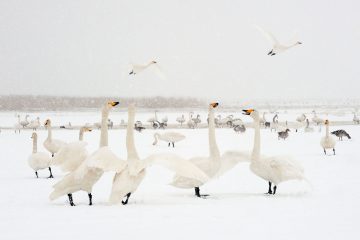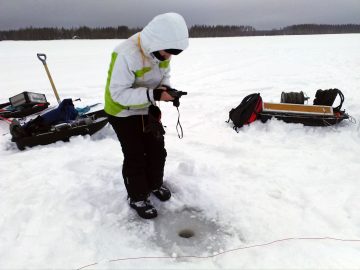A six-month study by two University of Lille students reveals the huge transformative potential of the site bought with a loan from Rewilding Europe Capital.

In April this year a loan from Rewilding Europe Capital, Rewilding Europe’s pioneering enterprise funding facility, enabled the Snowchange Cooperative (a Finnish nonprofit organisation) to purchase the 110-hectare, internationally recognised Linnunsuo wetland area in the North Karelian region of eastern Finland. The Jukajoki restoration project became a member of the European Rewilding Network (ERN) in 2016.
Linnunsuo, an environmentally degraded former peat production site, is currently in the process of rewilding itself, having been converted into a wetland over the past five years. Already an Important Bird Area (IBA), it is a key site in the ecological restoration of the Jukajoki basin, a flagship river project led by the North Karelian villages of Selkie and Alavi.

From January until July, Marion Laventure and Antoine Scherer – two young researchers from the University of Lille in France – conducted an intensive investigation of both Linnunsuo and the adjacent Jukajoki River. Their studies, carried out in collaboration with the Snowchange Cooperative and the Karelia University of Applied Sciences, focused on the health of local ecosystems.
“First and foremost, our observations and studies showed that Linnunsuo could become a wild and biodiverse ecosystem,” says Scherer. “Although the site still looks artificial and the rewilding timescale is long, the transformative potential here is huge.”
The initial aim of rewetting Linnunsuo, which took place in 2013, was to protect the Jukajoki River from the acidic compounds and heavy metals released by industrial peat extraction. Yet contrary to expectations, the site quickly became an important breeding, nesting and resting area for birds.
“Given the environmental degradation, the site really represents a process of rewilding from scratch,” says Laventure. “Linnunsuo is an open laboratory where we can see nature coming back of its own accord. The recolonisation that is now going on is a real testament to the resilience of nature.”
Before peat extraction took place Linnunsuo was renowned for its diverse birdlife (“Linnunsuo” actually means “bird marsh”). With the site now undergoing rewilding, an increasing number of birds are returning, including protected species such as the whooper swan. This only serves to increase the conservation value of the wetland.

“Having almost disappeared from the region a few decades ago, these swans are a beautiful symbol of how life is coming back to this wetland, despite the scale of previous ecological disturbance,” says Scherer. “The presence of protected species brings responsibilities and should definitely be considered in the future management strategy of the site.”
Scherer and Laventure used breeding birds as bioindicators of the ecological health of Linnunsuo. This year’s unusually cold spring appeared to have affected reproductive success, which was most notable by the absence of a black-headed gull colony. This is a species which usually nests at Linnunsuo in great numbers.
“The absence of the gulls had an impact on other bird species, because the predation pressure at Linnunsuo from species such as red fox, wolverine and raptors seems to be high,” says Laventure. “A possible solution could be the creation of islands in the wetland to provide safe nesting areas.”
Physico-chemical analyses and macrozoobenthos monitoring of Linnunsuo carried out by Scherer and Laventure also revealed that the site is still highly polluted, with very acidic water and high concentrations of aluminium and iron. These levels of pollution probably account, at least partially, for the low abundance and diversity of fish found by the researchers in the Jukajoki River.
Having witnessed the site first hand, Scherer and Laventure believe the Linnunsuo and Jukajoki restoration project can act as a highly valuable role model.
“Given the current biodiversity crisis, the need to restore and protect habitats such as Linnunsuo has never been stronger,” says Scherer. “The restoration and protection of peatlands, which constitute some of the most effective carbon sinks on the planet, can also help to mitigate climate change.”

The restoration work at Linnunsuo and on the Jukajoki River is underpinned by double-sided innovation, with the traditional knowledge of local villages employed alongside the latest scientific techniques. Linnunsuo is one of the first co-managed sites in Finland, balancing hunting and fishing with nature conservation and nature-based tourism activities such as birdwatching.
“Linnunsuo also represents a victory for all communities fighting land appropriation and ecological degradation,” says Laventure. “The implementation of a co-management model here has returned governance of the site to the people. They can now take decisions for the good of themselves and the local environment.”
Having witnessed the resilience of nature and the results that can be achieved when conservation takes account of local stakeholders and socio-economic issues, Scherer and Laventure are also convinced of the benefits of rewilding.
“Rewilding fascinates me because it is so progressive,” says Scherer. “This is an approach to nature conservation that actually supports local stakeholders and nature-based economies. Sites such as Linnunsuo demonstrate that such an approach can really bring about positive and enduring change.”
